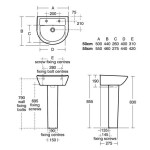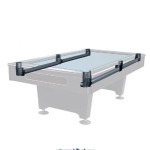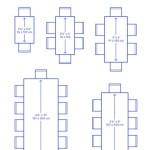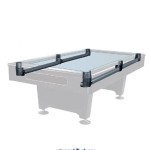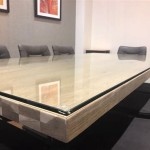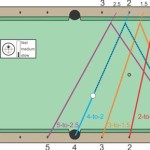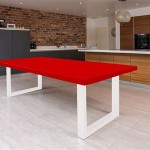What Is A Standard Size Pool Table?
The phrase "standard size pool table" can be misleading because there isn't one single, universally agreed-upon size. Instead, pool tables are manufactured in various sizes, each catering to different playing environments and skill levels. The dimensions impact gameplay, space requirements, and the overall experience. Understanding these sizes and their practical implications is crucial for anyone considering purchasing or utilizing a pool table.
The internal dimensions of a pool table, measured from the nose of the cushion on one side to the nose of the cushion on the opposite side, determine the legal playing area. These dimensions directly influence the difficulty and style of play. Smaller tables are generally considered more forgiving, while larger tables demand greater precision and skill. The external dimensions, encompassing the entire table including the rails and frame, are critical for assessing the space needed to comfortably accommodate the table and allow players ample room to maneuver and take shots.
Furthermore, the perceived "standard" can change depending on the type of pool being played. While all pool tables share basic features, variations like snooker tables exist with their own standardized dimensions. Therefore, pinpointing the appropriate pool table size requires careful consideration of the intended use and the available space.
Understanding Regulation Sizes and Why They Matter
For officially sanctioned pool tournaments and professional play, specific sizes are mandated to ensure fair and consistent gameplay. These regulation sizes provide a uniform playing field, allowing players to compete on an equal basis regardless of location. Two sizes dominate the world of professional pool: 9-foot and 8-foot tables. While 7-foot tables are common in bars and homes, they are rarely used in professional settings.
A 9-foot pool table, with an internal playing area of 50 inches by 100 inches, is the standard for many professional tournaments, particularly for games like 9-ball and 10-ball. The increased size demands a higher level of skill and precision. The longer shots and wider playing area require players to have excellent cue ball control and strategic thinking. The rails on a 9-foot table are typically faster and more responsive, further adding to the challenge.
An 8-foot pool table, with internal dimensions of 44 inches by 88 inches, is also frequently used in tournaments and is considered a suitable option for more casual competition. While smaller than a 9-foot table, it still provides a significant challenge and is often preferred for games like 8-ball. The reduced size makes it more manageable in smaller spaces while still maintaining a competitive element. Many amateur leagues utilize 8-foot tables to strike a balance between skill and accessibility.
The use of these specific sizes in professional settings highlights the importance of adhering to established standards. It ensures fairness, facilitates standardized training, and promotes consistent skill development across the sport. Therefore, understanding these regulation sizes is crucial for anyone aspiring to compete at a higher level or for facilities aiming to host sanctioned events.
Common Pool Table Sizes and Their Applications
Beyond the regulation sizes used in professional play, a range of other sizes caters to different needs and spatial constraints. These sizes commonly include 6-foot, 7-foot, and even smaller novelty tables. Each size offers a unique playing experience and is suitable for specific environments.
A 7-foot pool table, with internal dimensions of approximately 39 inches by 78 inches, is arguably the most common size found in homes, bars, and recreational facilities. Its relatively compact size makes it ideal for spaces where a full-sized 8- or 9-foot table would be impractical. While the smaller size makes it easier to pot balls, it also reduces the amount of strategic play and cue ball control needed. It is often seen as a more recreational option suitable for casual players and entertainment purposes.
6-foot pool tables, typically measuring around 33 inches by 66 inches internally, are often referred to as "bar tables" or "coin-operated tables." They are commonly found in establishments where space is limited and the primary objective is providing entertainment for patrons. These smaller tables are generally less expensive and easier to maintain, but they offer a significantly different playing experience compared to larger tables. Precision and strategic play are less crucial on a 6-foot table as the shorter distances make shots easier to execute.
Smaller novelty tables, often found in children's playrooms or as recreational games for younger players, can range in size from miniature versions to custom-built designs. These tables are not typically intended for serious play but rather for entertainment and introducing the basic principles of pool to beginners. The materials and construction quality often differ significantly from standard pool tables, with a focus on durability and affordability.
When selecting a pool table size, it is crucial to consider the available space and the intended use. A 7-foot table strikes a balance between size and playability for home use, while 8- or 9-foot tables are preferred for more serious players or those aspiring to compete. Smaller tables are suitable for entertainment purposes in limited spaces.
Factors to Consider When Choosing a Pool Table Size
Selecting the right pool table size involves more than just fitting it into a room. Several critical factors influence the decision-making process, including room size, player skill level, intended use, and budget. Carefully evaluating these factors will ensure that the chosen table size provides the best possible playing experience.
Room size is the most crucial consideration. Insufficient space around the table will severely limit playability. A general rule of thumb is to allow at least 5 feet of clearance around all sides of the table to accommodate the cue length during shots. This means that for a 9-foot table, a room of at least 15 feet by 19 feet is required. For an 8-foot table, a room of at least 14 feet by 18 feet is necessary. Failing to account for sufficient clearance will result in obstructed shots and a frustrating playing experience.
Player skill level should also be considered. Beginner players may find smaller tables more forgiving and easier to learn on. The shorter distances and wider pockets allow for more success, which can be encouraging during the initial learning stages. More experienced players, on the other hand, may prefer larger tables that demand greater precision and strategic planning. The challenge of longer shots and tighter pockets can enhance their skills and provide a more rewarding playing experience.
The intended use of the pool table is another important factor. If the table will primarily be used for casual games and entertainment, a 7-foot table may be sufficient. However, if the intention is to practice for tournaments or compete at a higher level, an 8- or 9-foot table is recommended. The larger sizes provide a more realistic simulation of tournament conditions and allow for more focused skill development.
Finally, budget plays a significant role in determining the appropriate pool table size. Larger tables typically cost more due to the increased materials and labor involved in their construction. Additionally, larger tables may require more expensive accessories, such as longer cues and heavier balls. It is important to establish a budget beforehand and consider the long-term costs associated with owning and maintaining a pool table before making a final decision.
By carefully considering these factors, individuals can select a pool table size that best suits their needs and provides a satisfying and engaging playing experience. A well-chosen table will not only provide years of entertainment but also enhance the overall enjoyment of the game.

The Official Size Of A Pool Table Canadian Home Leisure

What Is The Standard Size Of A Pool Table Measurement Guide Room

Pool Table Room Size Guide Chart Birkbeck Billiards

Pool Table Room Size Guide Chart Birkbeck Billiards

Correct Pool Table Dimensions To Leave Enough Room For Playing Billiard

How Tall Is A Standard Pool Table Height Guide Bar 101

Supreme Pool Table Room Size Information

How To Choose The Right Size Pool Table Hamilton Billiards Snooker Blog

Room Size Pooltables Com

Standard Pool Table Size Contemporary Home Office Furniture Check More At Http Www Nikkitsfun Com Standar Dimensions Sizes


